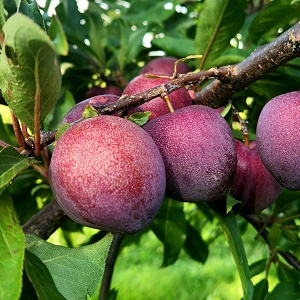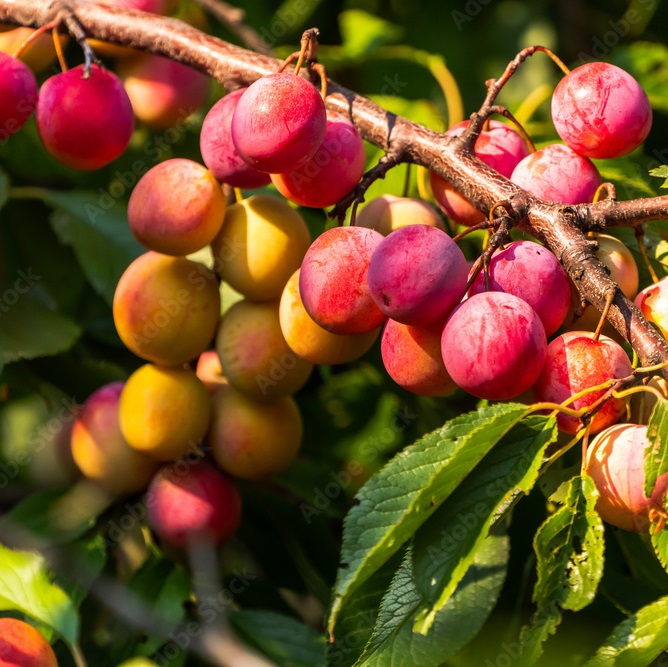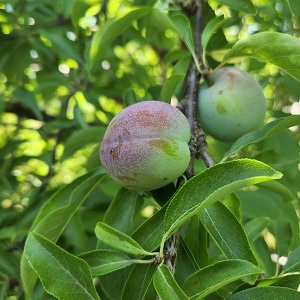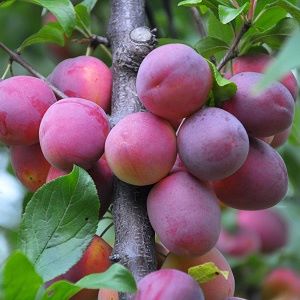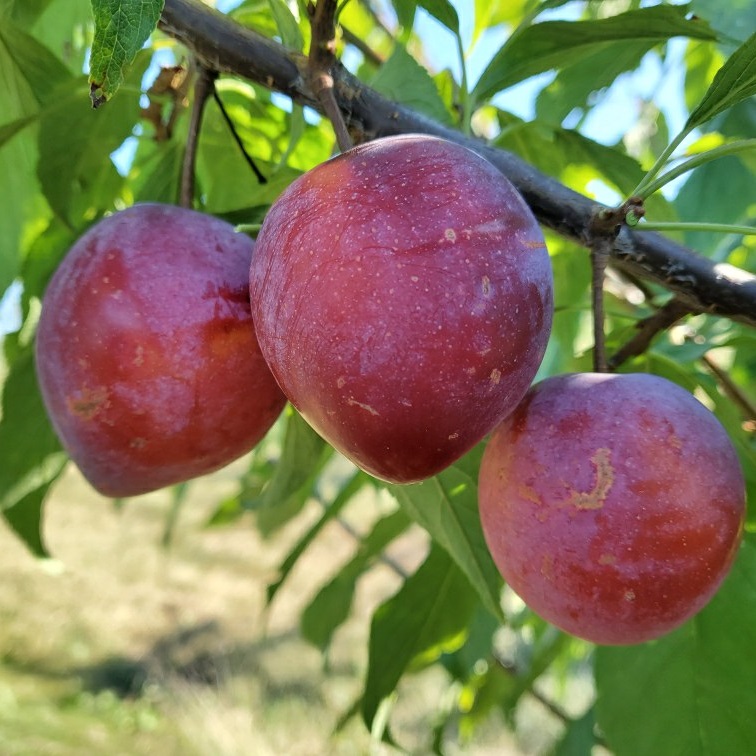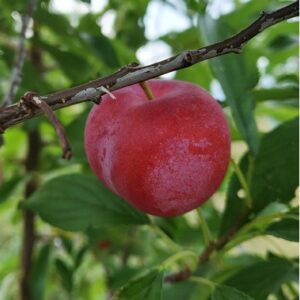American Hybrid Plum : PURPLE HEART Semi-Dwarf (Mustang) (Orchard Grade)
$42.95
An 'orchard grade' is a tree that may be somewhat shorter, slightly crooked, or a bit scratched, or for some other reason is not a perfect front lawn specimen. These trees will work just as well in an orchard as a first or number one would, since they still produce the very same fruit.
Very little is known about the background of this highly uncommon variety. John Bunker (of Fedco fame) declares it to be the most delicious plum they grow. Our own experience would definitely support his opinion. Mild, juicy and rich, it is crisp and sweet with no hint of astringency. Both skin and flesh are dark reddish-purple on this meaty, round 4-5cm (1½-1¾) plum with a very small pit. The naturally compact tree has a spreading form and bears at an early age. Cross-pollination appears to be achieved by either a Japanese or another American/Japanese hybrid plum.
NEEDS A POLLENIZER | ZONE 4 | HARVEST: MID AUG.
Rootstocks
G41 Dwarf
G935 Small Semi-Dwarf
G969 Small Semi-Dwarf
G30 Semi-Dwarf
G890 Semi-Dwarf
Pollenator definitions
NEEDS A POLLENIZER ̶ means another tree of the same type or kind but a different variety must be blooming nearby at the same time.
EXAMPLE A Liberty apple and a Wealthy apple can cross-pollinate. Two trees of the same variety ie: ̶ 2 Wealthy apples, cannot cross pollinate because they are genetically identical.
Other trees are marked as SEMI-FERTILE. These will set fruit without a second tree. However they will often bear more, and sometimes larger fruit if another variety of the same kind of tree is nearby.
You can select 2 different trees of the same kind marked as NEEDS A POLLENIZER or plant one of those along with one SELF-FERTILE or one SEMI-FERTILE. Also consider ripening times ̶ a Goldrush apple might not start blooming before a Pristine is finished.
